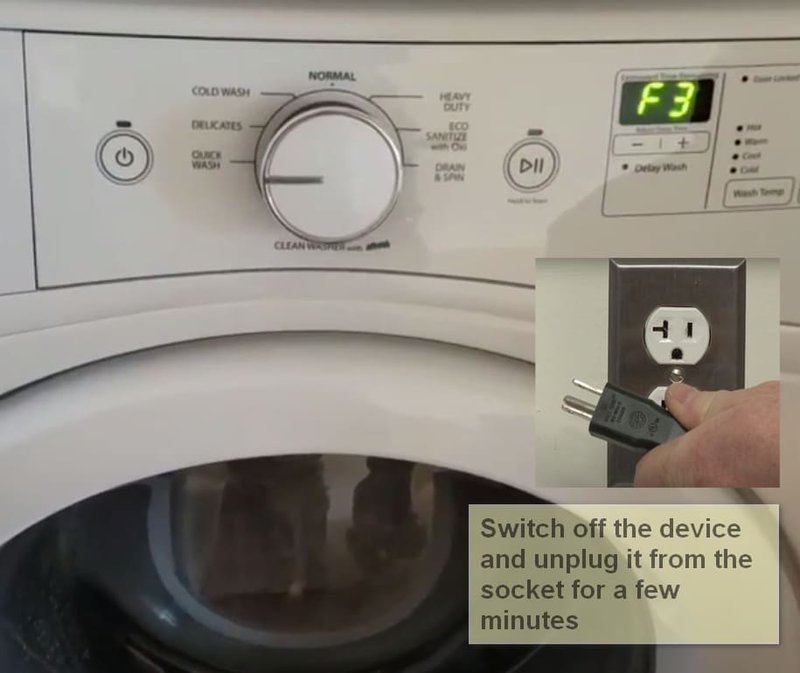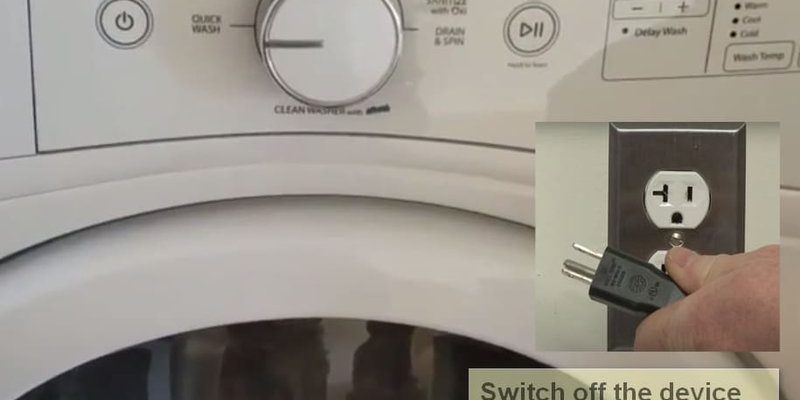
In this article, let’s dive into the meaning behind the E1 error code, unravel whether it’s safe to continue using your Whirlpool washer with this issue, and explore what steps you can take to resolve it. We’ll break it all down in an easy-to-understand way, just like chatting with a friend over coffee.
Understanding Error Code E1 on Whirlpool Washing Machines
First things first, what is this E1 error code all about? In simple terms, the E1 error usually indicates a problem with the water supply. Picture trying to fill a bucket with a garden hose, but someone’s accidentally kinked the hose. The water won’t flow properly, right? Similarly, when your washing machine can’t get enough water, it’ll let you know by flashing the E1 code.
Whirlpool washing machines use clever sensors and systems to ensure everything’s running smoothly. When these sensors detect an issue with water flow—perhaps a blocked water inlet valve, a kinked hose, or low water pressure—the machine says, “Hey, something’s not right here!” That’s your cue to take a closer look.
Understanding this error is essential because it holds the key to fixing the problem. You see, these error codes are like the washing machine’s way of communicating its struggles. Your machine isn’t defective; it’s just asking for a little help, much like a friend calling for a hand when things get tough.
Is It Safe to Continue Using the Machine?
So, you’re asking, “Can I still use my washing machine when it shows this error?” Here’s the deal: while the E1 error isn’t a sign of impending doom, it’s generally not a great idea to keep using the machine without addressing the issue. Think of it like driving a car with the tank almost empty; sure, you might go a little further, but eventually, you’re likely to stall.
Continuing to use the machine without fixing the water supply issue can lead to incomplete washing cycles and even more significant problems down the line. For instance, if the machine doesn’t get enough water, it can’t clean your clothes effectively. Plus, the constant start-stop of the machine trying to get water can strain its components, like the motor and pump.
Before you start worrying too much, though, here’s the good news: in many cases, fixing the E1 error is straightforward. It often involves simple steps like checking your water supply or adjusting the hoses and valves.
Steps to Resolve the E1 Error
Now, let’s get hands-on and tackle this pesky E1 error. Just like you’d follow a recipe, let’s go step-by-step. First, check the most obvious, yet commonly overlooked, issue—the water taps. Make sure they’re fully open; you’d be surprised how often these can get partially closed.
Secondly, inspect the water inlet hoses for any kinks or twists. Imagine trying to drink through a straw with a bend in it. The water has a hard time getting through, which is what might be happening with your washing machine. If the hoses look fine, the next suspect is the filter screens in the water inlet valve. They can sometimes get clogged with debris, much like a coffee filter that’s been used too many times without cleaning.
After cleaning and readjusting, run a quick test cycle. If the dreaded E1 code disappears, congratulations! You’ve likely solved the problem. If not, it might be time to consider calling a professional to check the internal components, just in case there’s a bigger issue lurking beneath the surface.
Preventing Future Occurrences
Nobody wants to see those error codes flashing again, so let’s talk prevention. Regular maintenance is your best friend when it comes to keeping your washing machine in top shape. It’s like taking your car for regular oil changes; a little upkeep can prevent significant headaches down the road.
Every few months, give the hoses and valves a quick check-up. Look for any signs of wear or damage. Also, keep an eye on your water supply quality. Hard water can cause mineral build-up, so consider using water softeners if that’s an issue in your area.
Finally, it’s always a good idea to refer back to your user manual for any specific maintenance tips recommended by Whirlpool. It’s surprising how much valuable information is packed away in those pages. They’re like a map leading you directly to the treasure of a smoothly operating washing machine.
Taking these steps not only ensures your appliance runs effectively but also prolongs its lifespan, keeping your laundry days stress-free.
In the end, dealing with the E1 error code may seem daunting at first, but with a little know-how and some proactive steps, you can handle it with ease. Your Whirlpool washing machine will thank you for the attention, and you’ll appreciate a hassle-free laundry experience.
